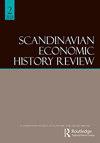刮桶底?19世纪挪威农村地区社会流动和内部移民的证据
IF 1
Q4 ECONOMICS
引用次数: 1
摘要
我们的目的是回答在19世纪的挪威,预期的职业收益是否激励了农村-城市和农村-农村的移民。人力资本理论表明,个体的预期收益越高,其迁移倾向越大。我们使用了基于1865年和1900年挪威人口普查的4.2万多名农村儿子与其父亲相关的微观数据集,并采用了一个切换内生回归模型来控制迁移决策的内生性。我们的主要发现是,期望职业增益对农村-城市迁移概率的影响根据农村儿子的目的地和父母职业地位的不同而不同:低地位家庭的儿子受到期望职业提升的激励而迁移。来自较高职业地位家庭的儿子只有在从农村向城市迁移的情况下才会受到预期职业收益的激励。本文章由计算机程序翻译,如有差异,请以英文原文为准。
Scraping the bottom of the barrel? Evidence on social mobility and internal migration from rural areas in nineteenth-century Norway
ABSTRACT We aim to answer whether expected occupational gains motivated rural-urban and rural-rural migration in nineteenth-century Norway. Human capital theory indicates that the higher expected gains, the more prone an individual will be to migrate. We use a micro-level data set of over 42,000 rural sons linked to their fathers based on 1865 and 1900 Norwegian censuses and employ a switching endogenous regression model controlling for the endogeneity of migration decisions. Our main finding is that the effect of expected occupational gain on the probability of rural-urban migration differs according to the rural sons’ destination and parental occupational status: the sons from low status families were migrating motivated by expected occupational advancement. Sons from families with higher occupational status were motivated by expected occupational gains only in the case of rural-urban migration.
求助全文
通过发布文献求助,成功后即可免费获取论文全文。
去求助
来源期刊

SCANDINAVIAN ECONOMIC HISTORY REVIEW
ECONOMICS-
CiteScore
1.60
自引率
16.70%
发文量
20
期刊介绍:
Scandinavian Economic History Review publishes articles and reviews in the broad field of Nordic economic, business and social history. The journal also publishes contributions from closely related fields, such as history of technology, maritime history and history of economic thought. Articles dealing with theoretical and methodological issues are also included. The editors aim to reflect contemporary research, thinking and debate in these fields, both within Scandinavia and more widely. The journal comprises a broad variety of aspects and approaches to economic and social history, ranging from macro economic history to business history, from quantitative to qualitative studies.
 求助内容:
求助内容: 应助结果提醒方式:
应助结果提醒方式:


